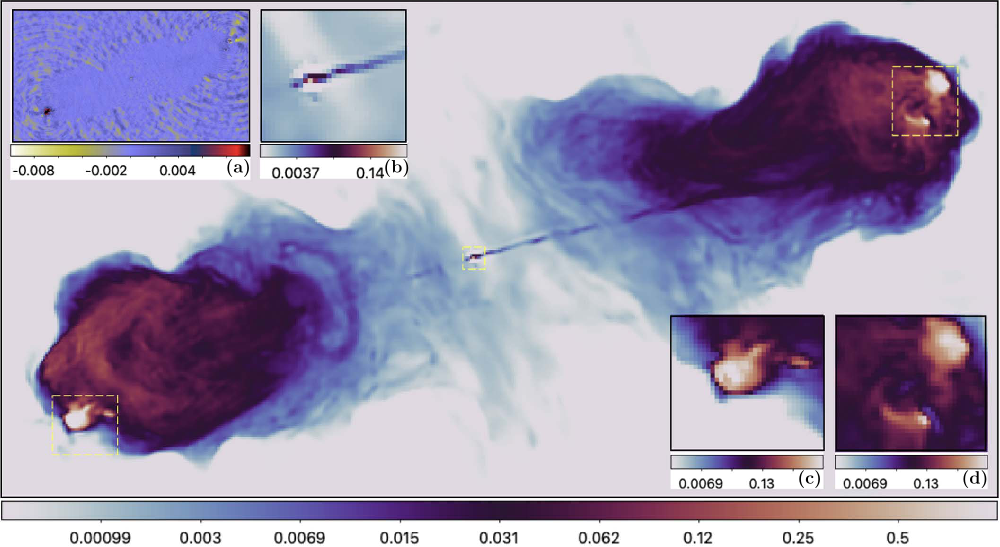Download
Abstract
A novel deep-learning paradigm for synthesis imaging by radio interferometry in astronomy was recently proposed, dubbed “Residual-to-Residual DNN series for high-Dynamic range imaging” (R2D2). In this work, we start by shedding light on R2D2’s algorithmic structure, interpreting it as a learned version of CLEAN with minor cycles substituted with a deep neural network (DNN) whose training is iteration-specific. We then proceed with R2D2’s first demonstration on real data, for monochromatic intensity imaging of the radio galaxy Cygnus A from S-band observations with the Very Large Array. We show that the modeling power of R2D2’s learning approach enables delivering high-precision imaging, superseding the resolution of CLEAN, and matching the precision of modern optimization and plug-and-play algorithms, respectively uSARA and AIRI. Requiring few major-cycle iterations only, R2D2 provides a much faster reconstruction than uSARA and AIRI, known to be highly iterative, and is at least as fast as CLEAN.
Figure 3: R3D3 reconstruction of the radio galaxy Cygnus A observed by the Very Large Array (VLA) at S band (2.052 GHz) using configuration A and C, displayed in $\textrm{log}_{10}$ scale.

Citation
Dabbech, Arwa, Amir Aghabiglou, Chung San Chu, and Yves Wiaux. “CLEANing Cygnus A deep and fast with R2D2.” The Astrophysical Journal Letters 966, no. 2 (2024): L34. https://iopscience.iop.org/article/10.3847/2041-8213/ad41df/.
@article{dabbech2024cleaning,
title={CLEANing Cygnus A deep and fast with R2D2},
author={Dabbech, Arwa and Aghabiglou, Amir and Chung San, Chu and Wiaux, Yves},
journal={The Astrophysical Journal Letters},
volume={966},
number={2},
pages={L34},
year={2024},
publisher={IOP Publishing},
url={https://iopscience.iop.org/article/10.3847/2041-8213/ad41df/}
}